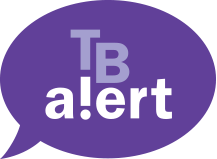A B C D E F G H I J K L M N O P Q R S T U V W X Y Z
| Ehrlich, Paul
|
German microbiologist and pathologist, most famous for his ‘magic bullets’ against syphilis. He discovered the characteristic ‘acid-fast’ staining property of mycobacteria and used it to visualise tubercle bacilli in sputum, including his own. | ||
| Empyema | Accumulation of pus in the chest cavity. | ||
| Endogenous reactivation, of tuberculosis | Tuberculosis occurring years or even decades after infection due to activation of the original infection. | ||
| Environmental mycobacteria | In addition to the Mycobacterium tuberculosis complex and Mycobacterium leprae, there are many species of mycobacteria that live in watery environments. Some of these occasionally cause human disease, notably in those who are immunosuppressed. Environmental mycobacteria can only be distinguished from their more aggressive cousin M. tuberculosis by bacteriological culture. Clinically the presentation of pulmonary disease is similar to tuberculosis with chronic cough weight loss and malaise. Soft tissue disease particularly of the lymph glands may occur in children. On microscopic smear and by the histological changes they cause, they are indistinguishable from the tubercle bacillus. | ||
| Epidemiology | The study of the causes, distribution, frequency and control of disease in populations. | ||
| Erythema nodosum | Firm and painful red patches or nodules, usually on the lower limbs, most often seen in children with primary tuberculosis aged between 5 and 10 years. It occurs more frequently in girls and in those with fair skin. It usually clears up within two weeks although reddening of the skin may remain for several weeks. It also occurs in other conditions, including streptococcal infections, leprosy, systemic fungal infections, sarcoidosis, leukaemia and as a reaction to certain drugs. | ||
| Ethambutol | One of the first-line anti-tuberculosis drugs, given during the first 2 months of therapy. Care is required in its use as it can cause visual disturbance (blurred and red/green colour disturbance) and irreversible eye damage. Patients should be told that if they experience any visual disturbance they should stop taking the drug and seek medical advice. | ||
| Ethionamide (Etionamide in the USA) | A drug used to treat cases of drug resistant tuberculosis. It is closely related to prothionamide (protionamide), a drug used for the same purpose. | ||
| Exogenous re-infection, of tuberculosis | Tuberculosis occurring in a person previously infected by tubercle bacilli but due to a new and recent re-infection. | ||
| Extra-pulmonary tuberculosis | Tuberculosis occurring outside the tissues of the lung, but including lesions within the thoracic cage. | ||
| Extra-thoracic tuberculosis | Lesions of tuberculosis occurring outside the thoracic cage. | ||
| Extensively drug-resistant TB (XDR TB) | A patient has multi drug-resistant TB (MDR-TB) plus resistance to two other groups of antibiotics (fluoroquinolones and injectable second-line drugs). |
